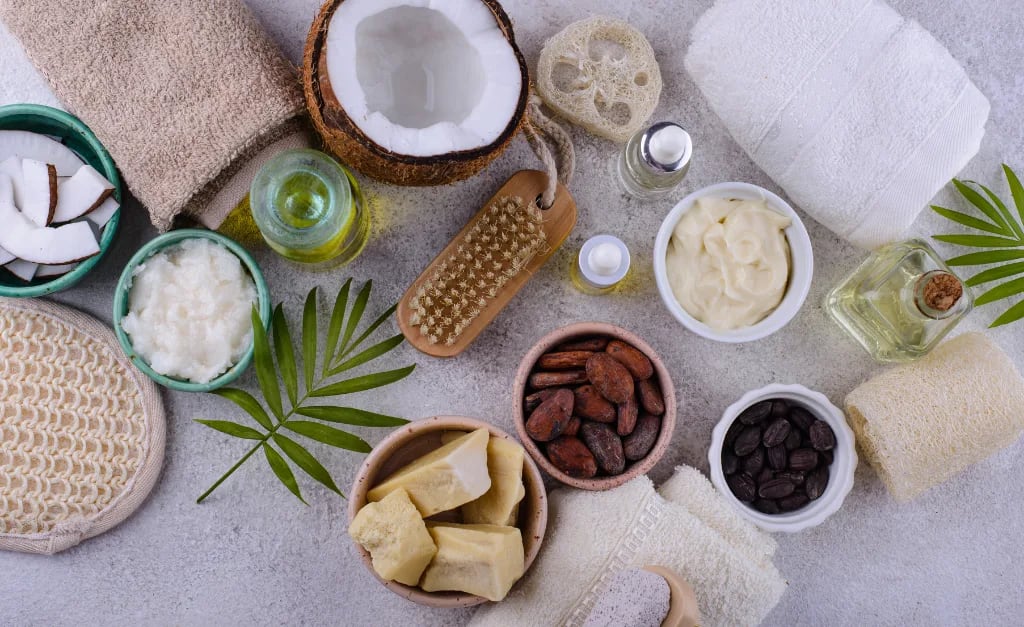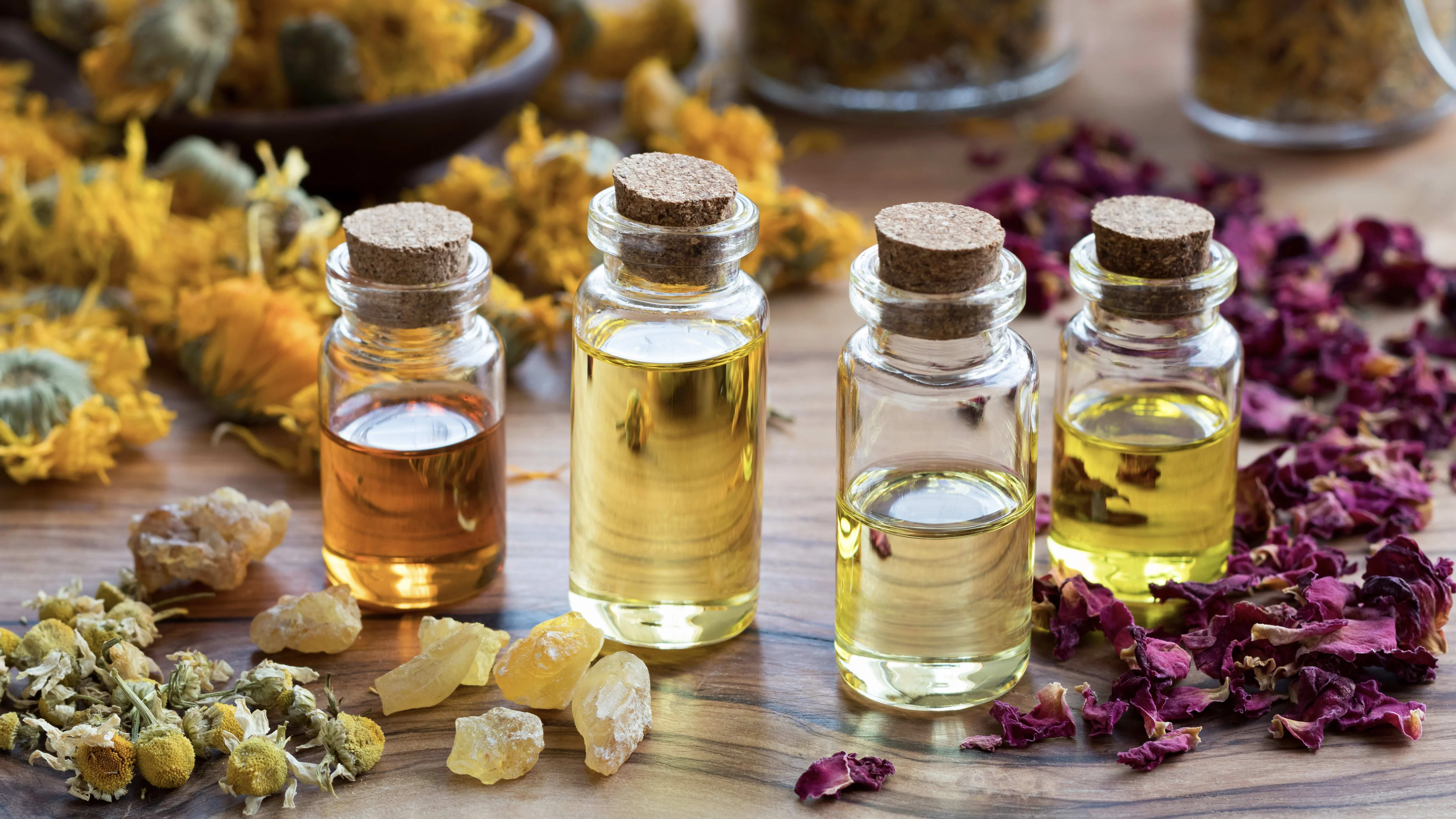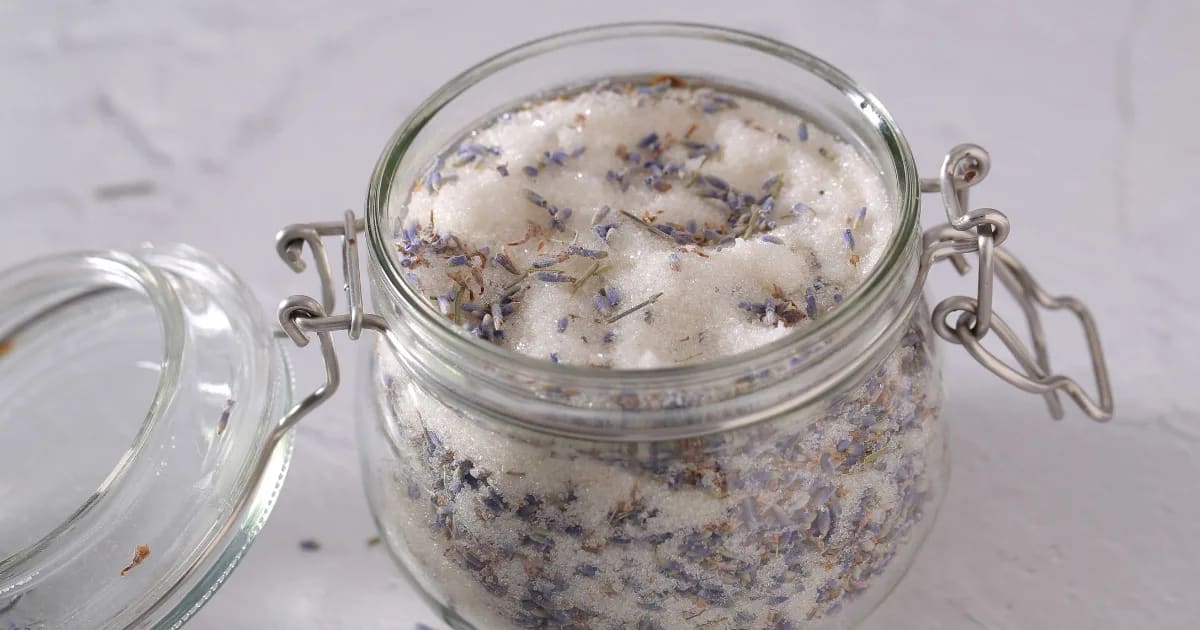Coconut Oil: A Skincare Classic with Researched Benefits

Coconut Oil: Classic for a Reason
I truly enjoy getting to know carrier oils and butters that are less commonly used, like marula oil and baobab seed oil. Yet, as much as my skin loves these rich, exotic carriers, I often come back to familiar, well-known classics—such as pure, unrefined coconut oil.
In my recent post on coconut oil, I discussed the benefits of lauric acid (which is only present in unrefined coconut oil, not the fractionated variety.) Studies on lauric acid show it can reduce microbes and actively heal the skin from damage.
In this post, we’ll take a look at specific research on unrefined coconut oil and lauric acid, showing how coconut oil benefits the skin.
You’ll learn…
Why coconut oil is ideal for calming painful inflammation.
How it can improve skin disorders.
A unique way that coconut oil can support newborn babies.
You’ll also get three recipes for using coconut oil in your natural skincare routine.
Antimicrobial Benefits of Coconut Oil
In one study, a 10-20% concentration of lauric acid was applied to burn wounds. It had a “strong inhibiting effect” on gram-positive bacteria, including Staphylococcus aureus. Unrefined coconut oil contains over 40% lauric acid. This gives me great confidence in using it to help protect wounds, and to reduce acne.
A 2007 study on various strains of Candida concluded that “coconut oil should be used in the treatment of fungal infections in view of emerging drug-resistant Candida species.” (Here’s some info on how to use essential oils for fungal issues.)
Lauric acid has even been shown to disrupt the membranes of several viruses, meaning the viruses can’t reproduce themselves.
Use it to make antifungal balms, foot butter, wound care butter, acne care, and deodorants.
Anti-inflammatory Benefits of Coconut Oil
Coconut oil has been shown to calm inflammation by reducing inflammatory markers, such as enzymes like COX-2. (Some essential oils can also suppress COX-2.) It can also increase the presence of antioxidants, which led researchers to suggest its use for issues like arthritis.
If you have a hot, red, swollen area, coconut oil can offer cooling relief. Along with easing pain, it’s been shown to calm heat.
Use it in balms and ointments for aching, inflamed joints, muscles, and skin.
Soothe Damaged Skin with Coconut Oil
Your skin barrier is the protective, outermost layer of your skin, preserving its moisture content and keeping out invaders.
Coconut oil can enhance the skin barrier. Considering its ability to calm inflammation and pain, it makes sense that, as one study put it, “clinical studies have revealed that [virgin coconut oil] improves the symptoms of skin disorders by moisturizing and soothing the skin.”
I like to include it in blends for issues like eczema and psoriasis. These qualities also make it ideal for burn care. (If you have chronically dry, cracked, painful skin, I think you’ll appreciate this recipe: Super Soaker Dry Skin Salve.)
Use it to make therapeutic butters for dryness, irritation, or minor burns.
Moisturizing & Emollient Benefits of Coconut Oil
Along with protecting the skin barrier, coconut oil is supremely gentle and moisturizing. It’s an excellent choice for those with sensitivities, softening rough, dry areas.
Thanks to its antioxidant and vitamin E content, coconut oil is also ideal for anti-aging blends. I sometimes apply it to reduce the appearance of fine lines and wrinkles.
Finally, it’s a popular choice for caring for babies and newborns. It’s one of my first choices for baby skin issues like baby acne or eczema. (Although, if I’m blending for a weepy diaper rash, I’ll usually opt for pure aloe vera gel, Aloe barbadensis. It’s more drying than coconut oil. A dry diaper rash, on the other hand, is the perfect opportunity to apply coconut oil.) Unrefined coconut oil has even been shown to help newborns gain healthy weight. (Are essential oils safe for babies? Here’s my approach to answering that question.)
You can use it all by itself or make a moisturizing body butter, lip balm, hand or foot cream, body scrubs, anti-aging blends, or even dry scalp treatments.
3 Coconut Oil Recipes
 1. Coconut Antifungal Oil
1. Coconut Antifungal Oil
You’ll need one 1 oz (30 ml) jar for this blend.
Ingredients
1 oz (26 g) unrefined Coconut oil (Cocos nucifera)
8 drops Tea Tree essential oil (Melaleuca alternifolia)
8 drops Peppermint essential oil (Mentha × piperita)
Directions
Put the coconut oil into the jar. Add the essential oils. If the coconut oil is solid, mush it around with a stirring stick or the back of a spoon until the essential oils are thoroughly blended in.
2. Coconut & Hemp Skin Protection Body Butter
 This body butter is supremely moisturizing and helps reduce microbes on your skin. (It doesn’t have any of the psychoactive effects of Cannabis sativa.)
This body butter is supremely moisturizing and helps reduce microbes on your skin. (It doesn’t have any of the psychoactive effects of Cannabis sativa.)
You’ll need one 4 oz (120 ml) PET plastic or glass jar for this blend.
Ingredients
2 oz (58 g) unrefined Coconut oil (Cocos nucifera)
1.3 fl oz (36 ml) Hemp seed oil (Cannabis sativa)
0.67 oz (19 g) Beeswax (Cera flava)
20 drops Patchouli essential oil (Pogostemon cablin)
Directions
Set up a “stovetop double boiler.” Place a soup pot on the stove, with about 2 inches of simmering water in it. Place a pyrex measuring cup in the soup pot, with the handle hanging over the side. Your ingredients go in the measuring cup, and the water heats the pyrex to melt them.
Melt the beeswax in the measuring cup.
Add the coconut oil and hemp seed oil. Remelt, stirring gently.
Remove the blend from heat and add the essential oil. Stir gently.
Pour it into your jar and let it solidify before using it.
3. Baby Coconut Care
Unrefined coconut oil is a pure, no-fuss, gentle-on-tender-skin moisturizer for babies and newborns. I prefer not to add anything to it, allowing the lauric acid to infuse baby’s skin with moisture, and encouraging dry, irritated areas to heal.
My Takeaway
Coconut oil, with its remarkable blend of therapeutic benefits, proves time and again why it's a staple in skincare. From its potent antimicrobial and anti-inflammatory properties to its ability to nourish and repair the skin barrier, this versatile oil is a powerhouse for natural skin remedies.
Personally, I find its simplicity and effectiveness make it an invaluable addition to my skincare routine, and I love how easy it is to create DIY skincare products with it. Give these recipes a try and experience the natural goodness of coconut oil for yourself!
References
Bobiński, R., Wyszomirski, M., Machnickam, A., Pielesz, A., Kawecki, M., Waksmańska, W., Staniszewski, L. (2020) The Effect of Lauric Acid on Pathogens Colonizing the Burn Wound: A Pilot Study. Alternative Therapies in Health and Medicine. 2020 Mar;26(2):23-27. PMID: 31634869.
DebMandal, M., Mandal, S. (2011) Coconut (Cocos nucifera L.: Arecaceae): in health promotion and disease prevention. Asian Pacific Journal of Tropical Medicine. 2011 Mar;4(3):241-7. doi: 10.1016/S1995-7645(11)60078-3. Epub 2011 Apr 12. PMID: 21771462.
Intahphuak, S. Khonsung, P., Panthong, A. (2010) Anti-inflammatory, analgesic, an antipyretic activities of virgin coconut oil. Pharmaceutical Biology. 2010 Feb;48(2). Doi: 10.3109/13880200903062614. PMID: 20645831.
Keen, M.A., & Hassan, I. (2016). Vitamin E in dermatology. Indian dermatology online journal, 7(4), 311–315. https://doi.org/10.4103/2229-5178.185494
Nair, M.K., Joy, J., Vasudevan, P., Hinckley, L., Hoagland, TA., Venkitanarayanan, KS. (2005) Antibacterial effect of caprylic acid and monocaprylin on major bacterial mastitis pathogens. Journal of Dairy Science. 2005 Oct;88(10):3488-95. doi: 10.3168/jds.S0022-0302(05)73033-2. PMID: 16162522.
Nakatsuji, T., Kao, MC., Fang, JY., Zouboulis, CC., Zhang, L., Gallo, RL., Huang, CM. (2009) Antimicrobial property of lauric acid against Propionibacterium acnes: its therapeutic potential for inflammatory acne vulgaris. Journal of Investigative Dermatology. 2009 Oct;129(10):2480-8. doi: 10.1038/jid.2009.93. Epub 2009 Apr 23. PMID: 19387482; PMCID: PMC2772209.
Ogbolu, D.O., Oni, A.A., Daini, O.A., Oloko, A.P. (2007) In vitro antimicrobial properties of coconut oil on Candida species in Ibadan, Nigeria. Journal of Medicinal Food. 2007 Jun;10(2):384-7. doi: 10.1089/jmf.2006.1209. PMID: 17651080.
Pupala, S.S., Rao, S., Strunk, T., Patole, S. (2019) Topical application of coconut oil to the skin of preterm infants: a systematic review. European Journal of Pediatrics. 2019 Sep;178(9):1317-1324. doi: 10.1007/s00431-019-03407-7. Epub 2019 Jul 2. PMID: 31267223.
Varma, SR., Sivaprakasam, TO., Arumugam, I., Dilip, N., Raghuraman, M., Pavan, KB., Rafiq, M., Paramesh, R. (2018) In vitro anti-inflammatory and skin protective properties of Virgin coconut oil. Journal of Traditional and Complementary Medicine. 2018 Jan 17;9(1):5-14. doi: 10.1016/j.jtcme.2017.06.012. PMID: 30671361; PMCID: PMC6335493.
Vysakh, A., Ratheesh, M., Rajmohanan, TP., Pramod, C., Premlal, S., Girish, Kumar B., Sibi, PI. (2014) Polyphenolics isolated from virgin coconut oil inhibits adjuvant induced arthritis in rats through antioxidant and anti-inflammatory action. International Immunopharmacology. May;20(1):124-30. doi: 10.1016/j.intimp.2014.02.026. Epub 2014 Mar 6. PMID: 24613207.





